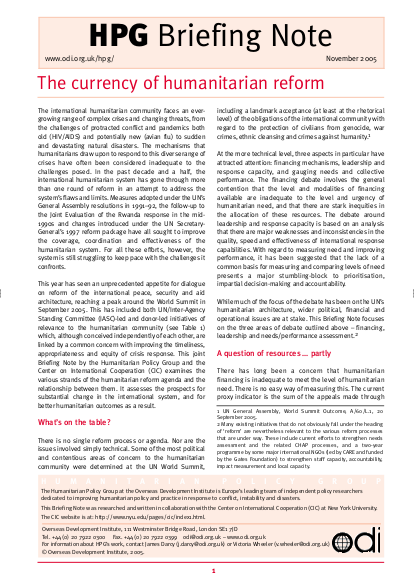
The international humanitarian community faces an evergrowing
range of complex crises and changing threats, from
the challenges of protracted conflict and pandemics both
old (HIV/AIDS) and potentially new (avian flu) to sudden
and devastating natural disasters. The mechanisms that
humanitarians draw upon to respond to this diverse range of
crises have often been considered inadequate to the
challenges posed. In the past decade and a half, the
international humanitarian system has gone through more
than one round of reform in an attempt to address the
system’s flaws and limits. Measures adopted under the UN’s
General Assembly resolutions in 1991–92, the follow-up to
the Joint Evaluation of the Rwanda response in the mid-
1990s and changes introduced under the UN Secretary-
General’s 1997 reform package have all sought to improve
the coverage, coordination and effectiveness of the
humanitarian system. For all these efforts, however, the
system is still struggling to keep pace with the challenges it
confronts.
